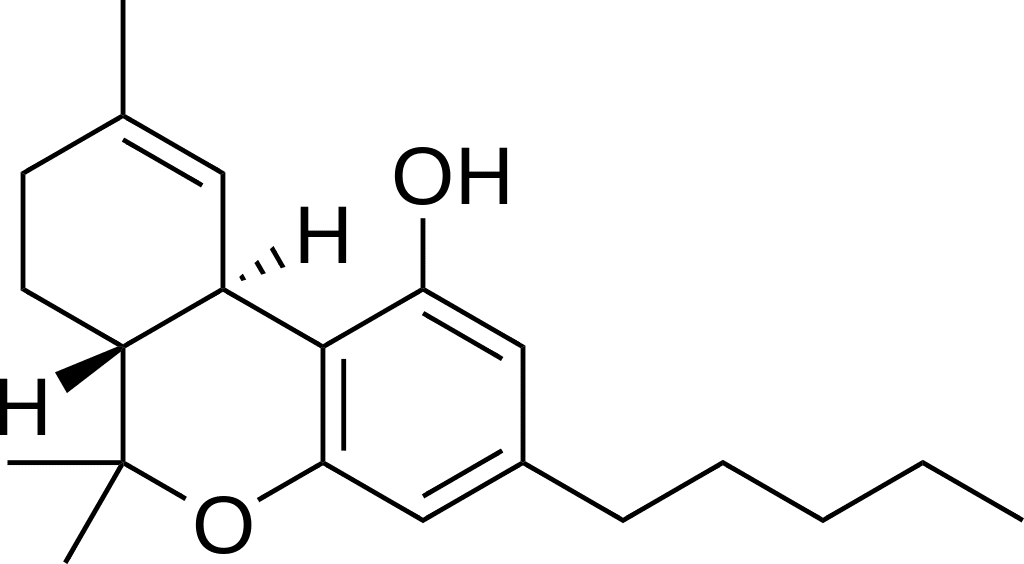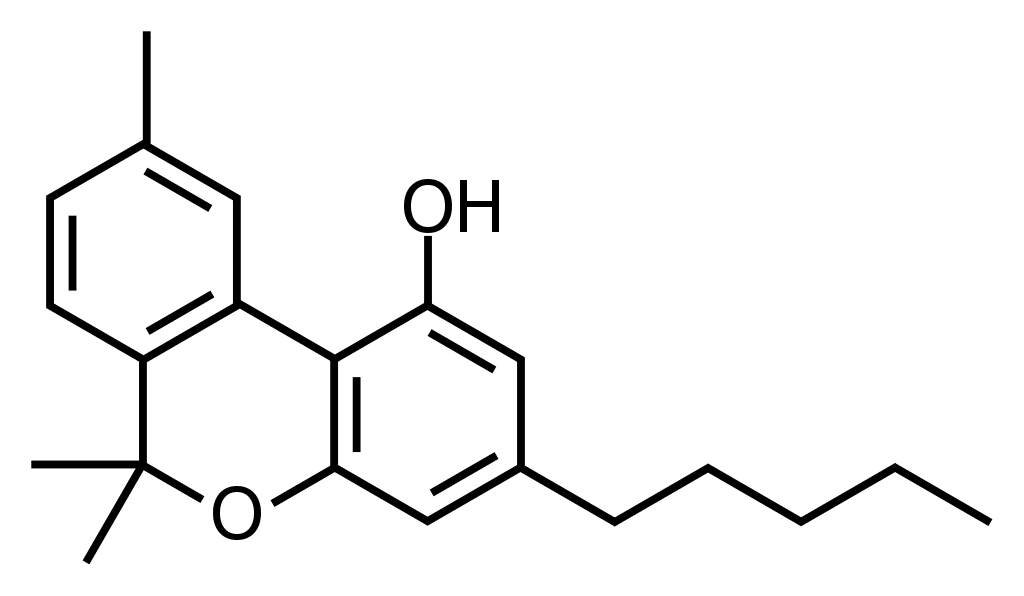Cannabinol (CBN) is the degradation cannabinoid from Δ-9-tetrahydrocannabinol (THC). Recent years have seen interest in CBN increase due to low intoxication effects and certain potential benefits. [1] Few cannabis chemovars emphasize this cannabinoid naturally although it may be slightly elevated in overripe flowers. When the main goal is to decrease THC and increase CBN, extractors and processors may implement different techniques to convert THC to CBN.
Δ-9-THC. Public Domain.
Cannabinol (C21H26O2). Public Domain.
The most common and obvious strategy beyond natural aging is to apply heat. According to Wang et al [2], “Δ-9-THC itself readily oxidizes to cannabinol (CBN) with oxygen and light during the decarboxylation process.” A different study published in 2005 found that this oxidation occurred above 150° C (302° F) given a 15-minute decarboxylation period. [3] The typical decarb process employs lower temperatures and longer times to avoid this conversion and preserve Δ-9-THC; amping up the temperature may thus prove useful for CBN seekers. However, using a vacuum oven mitigates this conversion. [2]
An active patent was granted earlier this year that describes heat/decarboxylation as a “method for increasing cannabinol content in a lipid-based extract of cannabis.” The first step is to deliberately vaporize Δ-9-THC at 160° C, and the second step is a heating conversion of remaining Δ-9-THC to CBN at 140-160° C for up to 60 minutes. The implication is that such conversion can be used to remediate hemp with THC concentrations that exceed federal legal limits.
Light also degrades cannabis and facilitates conversion of THC to CBN. Theoretically, intense light exposure might also prove useful. Ultraviolent light is mentioned as an alternative to heat as the second step in the aforementioned patent although details are not provided.
Pollastro et al [4] took a different approach to THC-CBN conversion, namely iodine treatment. The authors report that “refluxing in toluene with two equivalents of iodine was sufficient for the spot-to-spot conversion of Δ-9-THC into CBN. After workup and chromatographic purification, a rewarding 70% yield was obtained.” Interestingly, iodine also converted cannabidiol (CBD) and acidic precursors (tetrahydrocannabinolic acid and cannabidiolic acid). The authors speculate that the aromatization reaction involves the formation of acidic molecules that facilitate the cyclization of CBD into THC. This technique is therefore applicable for CBN from intoxicating and non-intoxicating cannabis varieties. [4]
Often considered mere evidence of old cannabis, CBN may soon become a minor cannabinoid of prominence. Potency (in terms of intoxication due to agonist activity at cannabinoid receptors) has been estimated from 10 to 25% compared to THC. [1,5] Among its various potential therapeutic properties, CBN is most popularly associated with sedative effects. Converting THC and other cannabinoids to CBN may offer a way for product creators to diversify and meet newfound demand.
References
- Russo EB, Marcu J. Chapter three – Cannabis pharmacology: The usual suspects and a few promising leads. In: Kendall D, Alexander SPH, eds. Cannabinoid Pharmacology. Vol 80. Academic Press; 2017:67-134. doi:https://doi.org/10.1016/bs.apha.2017.03.004 [Times Cited: 38]
- Wang M, et al. Decarboxylation study of acidic cannabinoids: A novel approach using ultra-high-performance supercritical fluid chromatography/photodiode array-mass spectrometry. Cannabis & Cannabinoid Research. 2016;1(1):262-271. doi:10.1089/can.2016.0020. [Impact Factor: n/a; Times Cited: 37]
- Dussy FE, et al. Isolation of delta-9-THCA-A from hemp and analytical aspects concerning the determination of delta-9-THC in cannabis products. Forensic Sci Int. 2005;149(1):3-10. doi:10.1016/j.forsciint.2004.05.015 [Impact Factor: 2.108; Times Cited: 99]
- Pollastro F, et al. Iodine-promoted aromatization of p-menthane-type phytocannabinoids. J Nat Prod. 2018;81(3):630-633. doi:10.1021/acs.jnatprod.7b00946 [Impact Factor: 3.779; Times Cited: 1]
- Hosking RD, Zajicek JP. Therapeutic potential of cannabis in pain medicine. BJA. 2008;101(1):59-68. [Impact Factor: 6.880; Times Cited: 95]













